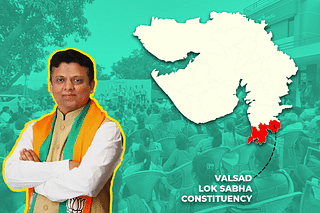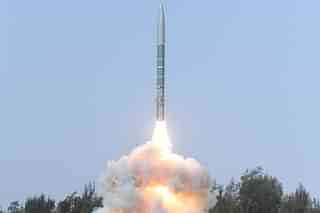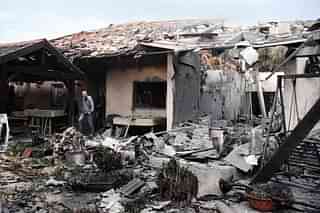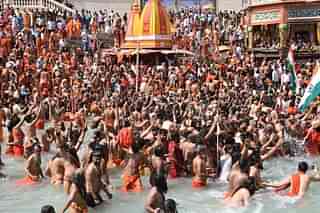Defence
On This Day, In 1971, Indian Army Completely Encircled The Pakistani Army Garrison At Dhaka, From Three Sides
Ujjwal Shrotryia
Dec 12, 2023, 05:19 PM | Updated Dec 14, 2023, 06:17 PM IST
Save & read from anywhere!
Bookmark stories for easy access on any device or the Swarajya app.
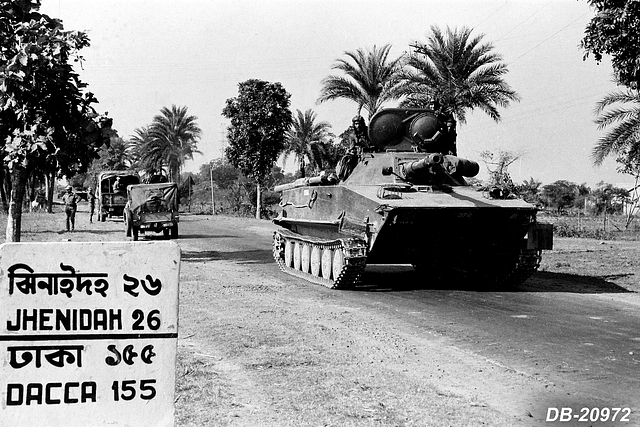
On this day (12 December), in 1971, the encirclement of Pakistani Eastern Command Headquarters was almost complete with Indian Army troops surrounding Dhaka from three sides.
4 Corps commander Lieutenant General Sagat Singh displaying innovation and ingenuity, using Indian Air Force's (IAF's) Mi-4 helicopters from Helicopter Unit's 110 and 105 and boat crossing, moved almost a division sized force across the Meghna river for a final dash to Dhaka.
By 12 December, the heli-lift across the Meghna was complete, and the 4 Guards, the first unit heli-lifted to Raipura near Brahmanbaria, were almost at Dhaka's gates, from the east.
By 0800 hours, the first elements of the 4 Guards were just 12 kilometres from Dhaka, accompanied by almost a division-sized force.
Moreover, by the end of 12 December, Dhaka came within the artillery range of the 311 Mountain Brigade, which, along with its complement of artillery guns, was entirely heli-lifted across the Meghna. The 4 Guards were part of this brigade.
The boat crossing of the Meghna by the 19 Punjab held up two brigades of the Pakistani Army's 14th Infantry Division at Bhairab Bazar.
From the northeast, the hardy troops of the 4/5 Gorkha Regiment held up two Pakistani brigades (the 202 Adhoc and 313 Sylhet), comprising nearly 7,000 men, at Sylhet.
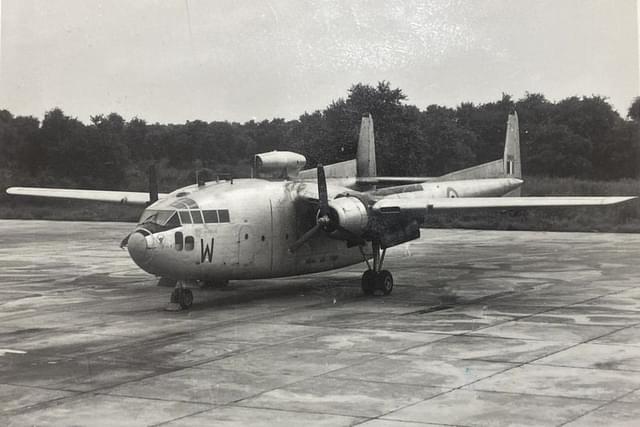
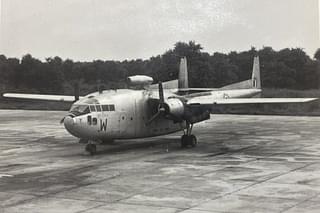
Additionally, in the north, the Tangail paradrop by 2 Para prevented the 93rd Brigade of the Pakistan Army from withdrawing to Dhaka. The paradrop, completed by 1630 hrs on 11 December, and the subsequent capture of the Poongli bridge took the Pakistani Army's higher command by complete surprise.
Throughout the night of 11 December and the morning of 12 December, 2 Para beat back five counterattacks by the 93rd Brigade. By the afternoon of 12 December, they had successfully linked up with the 1st Maratha Light Infantry.
The combined forces of 2 Para and 1 Maratha Light Infantry decisively defeated the understrength 93rd Brigade, with well-coordinated ambushes and precise bombing runs by the IAF.
Meanwhile, IAF Flight Lieutenant B B Soni achieved a rare feat in aviation history by shooting down a PAF American-supplied supersonic fighter jet — F-104 Starfighter — using only his guns.
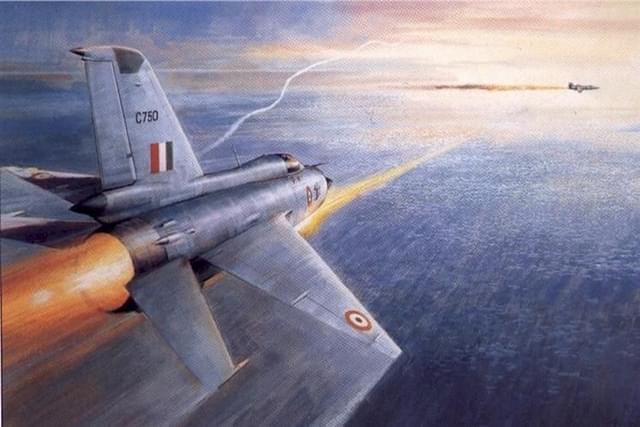
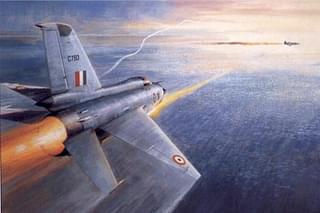
This extraordinary feat was executed over the skies of Jamnagar, where he used the guns of his Soviet-made MiG-21 fighter.
Additionally, the IAF conducted crucial resupply missions for the Gorkhas in the Sylhet sector and the Paras at Tangail, using 5 An-12s and a Fairchild C-119 Packet aircraft.
The IAF also hit a PAF radar at Badin and increasingly opted for search and strike missions to locate and strike Pakistan Army troop concentrations.
During these missions, IAF pilots identified and destroyed a large Pakistan Army concentration near the Hardinge Bridge on the west bank of the Padma in eastern Pakistan.
In the mountains of Ladakh, the troops led by Lt Colonel Chewan Rinchen, moved swiftly.
They had already captured Pt 18402 (from the top of which all Indian positions, including the Indian Army headquarters at Partapur, and Thoise airfield, in the east, and Pakistan Army's Turtuk, and Chulunkha defence complex in the west, were visible), on (8 December).
They moved stealthily and captured Chulunkha defence complex (on 9 December) despite heavy resistance from Pakistani troops.
The advance of the troops from the Ladakh Scouts and the four companies of the Nubra Guards, which were formed by recruiting 550 local men, set the stage for the imminent capture of Turtuk on 14 December.
Also Read: On This Day, In 1971, India's First-Ever Paradrop At Tangail Paved The Way For A Victory At Dhaka
Save & read from anywhere!
Bookmark stories for easy access on any device or the Swarajya app.
Editorial Associate at Swarajya. Writes on Indian Military and Defence.
Support Swarajya's 50 Ground Reports Project & Sponsor A Story
Every general election Swarajya does a 50 ground reports project.
Aimed only at serious readers and those who appreciate the nuances of political undercurrents, the project provides a sense of India's electoral landscape. As you know, these reports are produced after considerable investment of travel, time and effort on the ground.
This time too we've kicked off the project in style and have covered over 30 constituencies already. If you're someone who appreciates such work and have enjoyed our coverage please consider sponsoring a ground report for just Rs 2999 to Rs 19,999 - it goes a long way in helping us produce more quality reportage.
You can also back this project by becoming a subscriber for as little as Rs 999 - so do click on this links and choose a plan that suits you and back us.
Click below to contribute.

